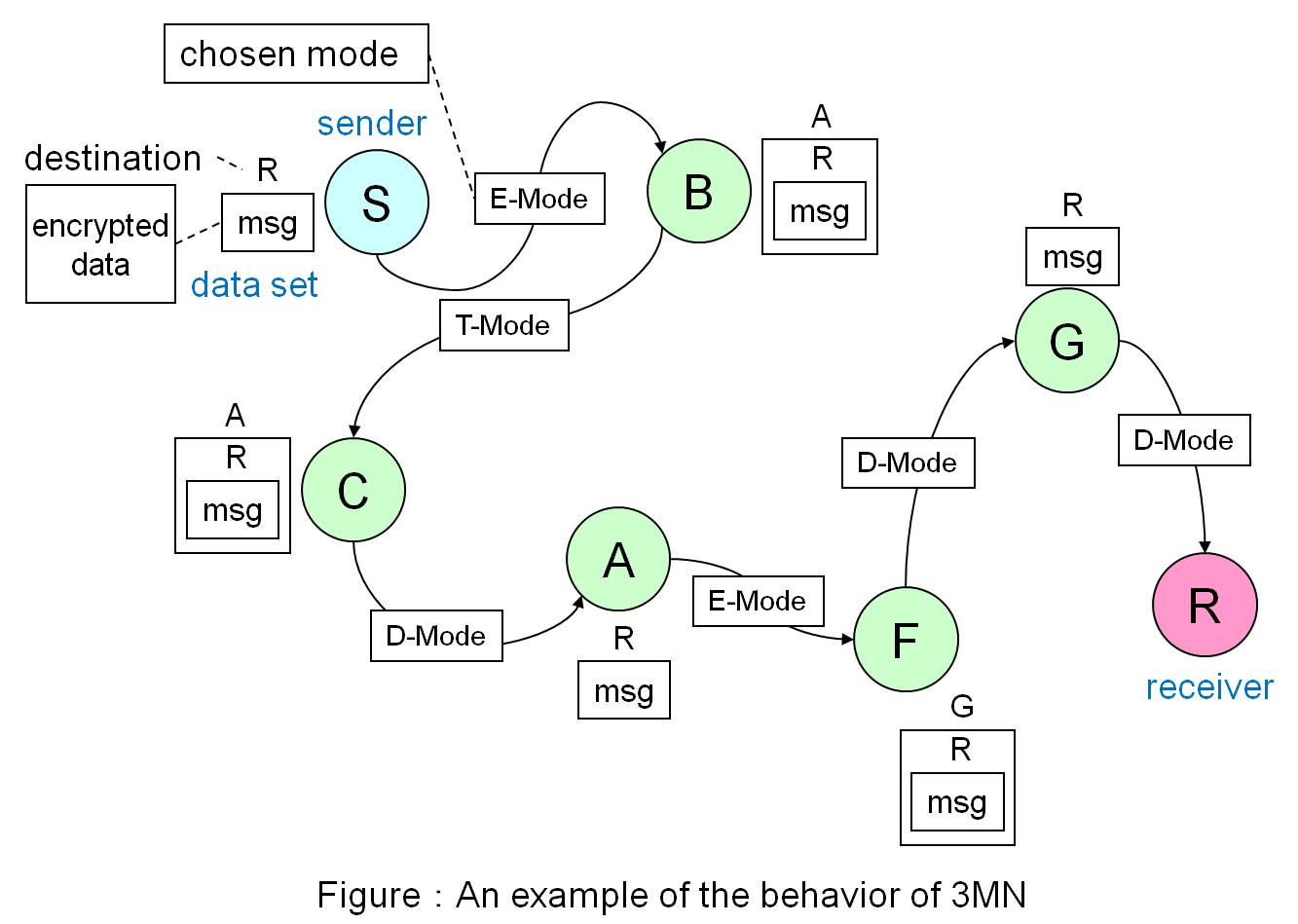3-mode net: anonymous communication system based on multiple encryption and probabilistic selections of actions
In a communication, encryption protocols such as TLS/SSL protect the content of messages. However, these protocols cannot hide the sender and the receiver of a message because their IP addresses are exposed in the header of their IP packets. Thus, a malicious user can infer the relationship between the sender and the receiver and their preferences. Therefore, many anonymous communication systems, which hide the sender and the receiver have been proposed.
Recently, a new anonymous communication system called 3-Mode Net (3MN) has been proposed. 3MN can be regarded as a generalization of the existing methods, i.e., Crowds and Onion Routing. 3MN has three modes and each relay node chooses one of these modes randomly according to predefined probabilities. The first mode is called Decryption Mode (D-Mode). In this mode, a node transmits a received data set to its destination and the destination node decrypts it. The second mode is called Transmission Mode (T-Mode). In this mode, a node forwards a received data set to other than destination node. The third mode is called Encryption Mode (E-Mode). In this mode, a node creates a new data set by encrypting the received data set and after that, the node forwards the new data set to other node. Due to the existence of E-Mode, 3MN provides sender anonymity, as well as receiver anonymity.
One of the crucial problem of 3MN is that there is a possibility that the number of relay nodes required for a communication becomes significantly large. In order to overcome this problem, we consider the method based on the random sampling without replacement, and the use of secure multi-party computations.

Back